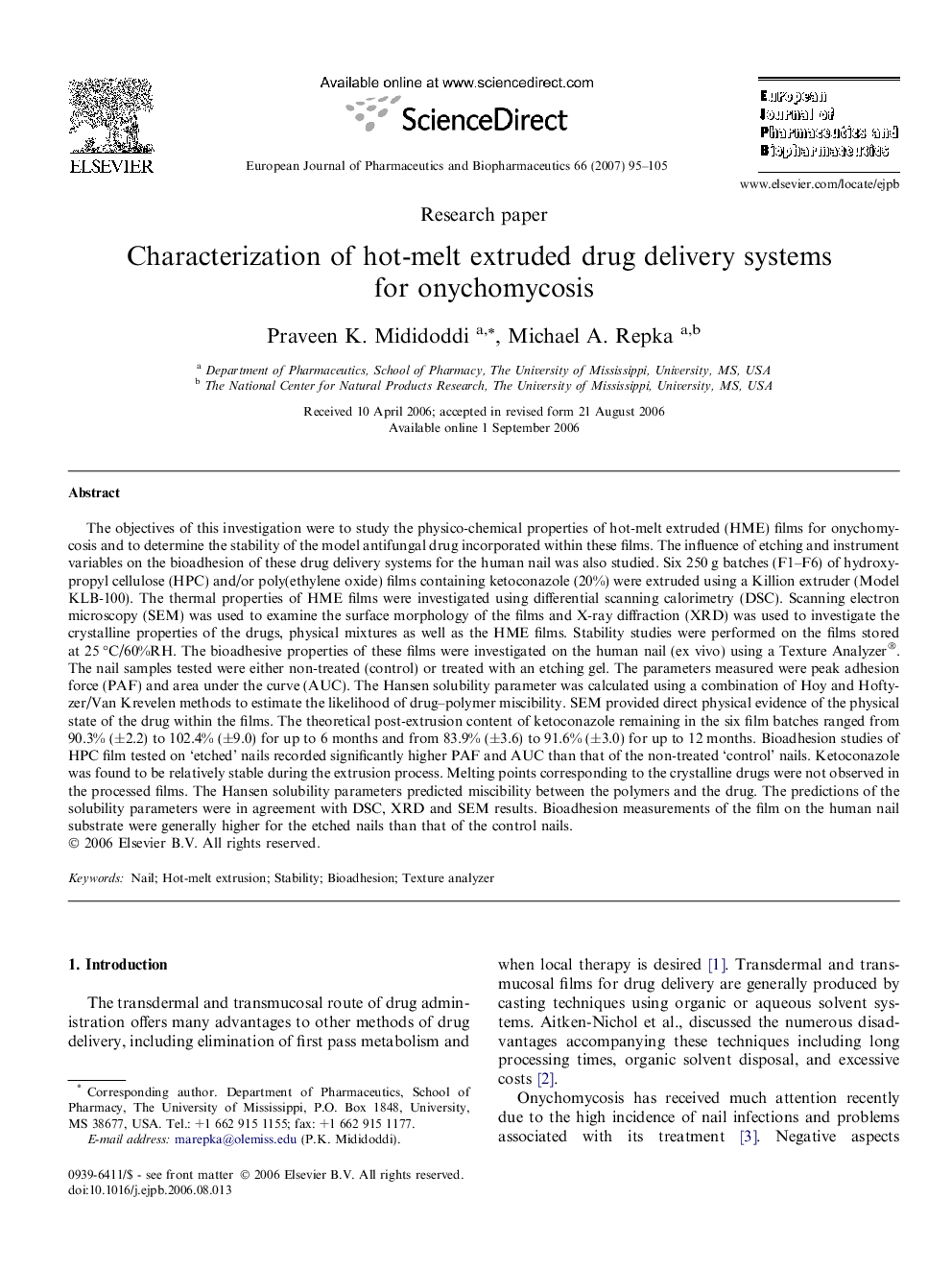| کد مقاله | کد نشریه | سال انتشار | مقاله انگلیسی | نسخه تمام متن |
|---|---|---|---|---|
| 2084962 | 1645470 | 2007 | 11 صفحه PDF | دانلود رایگان |

The objectives of this investigation were to study the physico-chemical properties of hot-melt extruded (HME) films for onychomycosis and to determine the stability of the model antifungal drug incorporated within these films. The influence of etching and instrument variables on the bioadhesion of these drug delivery systems for the human nail was also studied. Six 250 g batches (F1–F6) of hydroxypropyl cellulose (HPC) and/or poly(ethylene oxide) films containing ketoconazole (20%) were extruded using a Killion extruder (Model KLB-100). The thermal properties of HME films were investigated using differential scanning calorimetry (DSC). Scanning electron microscopy (SEM) was used to examine the surface morphology of the films and X-ray diffraction (XRD) was used to investigate the crystalline properties of the drugs, physical mixtures as well as the HME films. Stability studies were performed on the films stored at 25 °C/60%RH. The bioadhesive properties of these films were investigated on the human nail (ex vivo) using a Texture Analyzer®. The nail samples tested were either non-treated (control) or treated with an etching gel. The parameters measured were peak adhesion force (PAF) and area under the curve (AUC). The Hansen solubility parameter was calculated using a combination of Hoy and Hoftyzer/Van Krevelen methods to estimate the likelihood of drug–polymer miscibility. SEM provided direct physical evidence of the physical state of the drug within the films. The theoretical post-extrusion content of ketoconazole remaining in the six film batches ranged from 90.3% (±2.2) to 102.4% (±9.0) for up to 6 months and from 83.9% (±3.6) to 91.6% (±3.0) for up to 12 months. Bioadhesion studies of HPC film tested on ‘etched’ nails recorded significantly higher PAF and AUC than that of the non-treated ‘control’ nails. Ketoconazole was found to be relatively stable during the extrusion process. Melting points corresponding to the crystalline drugs were not observed in the processed films. The Hansen solubility parameters predicted miscibility between the polymers and the drug. The predictions of the solubility parameters were in agreement with DSC, XRD and SEM results. Bioadhesion measurements of the film on the human nail substrate were generally higher for the etched nails than that of the control nails.
Journal: European Journal of Pharmaceutics and Biopharmaceutics - Volume 66, Issue 1, April 2007, Pages 95–105